Location of practice: 30 Belmore Rd, Lorn, NSW 2320
Area of interest:
Body contouring surgery post pregnancy and post-weight loss, including Abdominoplasty, Mastopexy, Breast augmentation (Augmentation mammoplasty), Brachioplasty and Thighplasty.

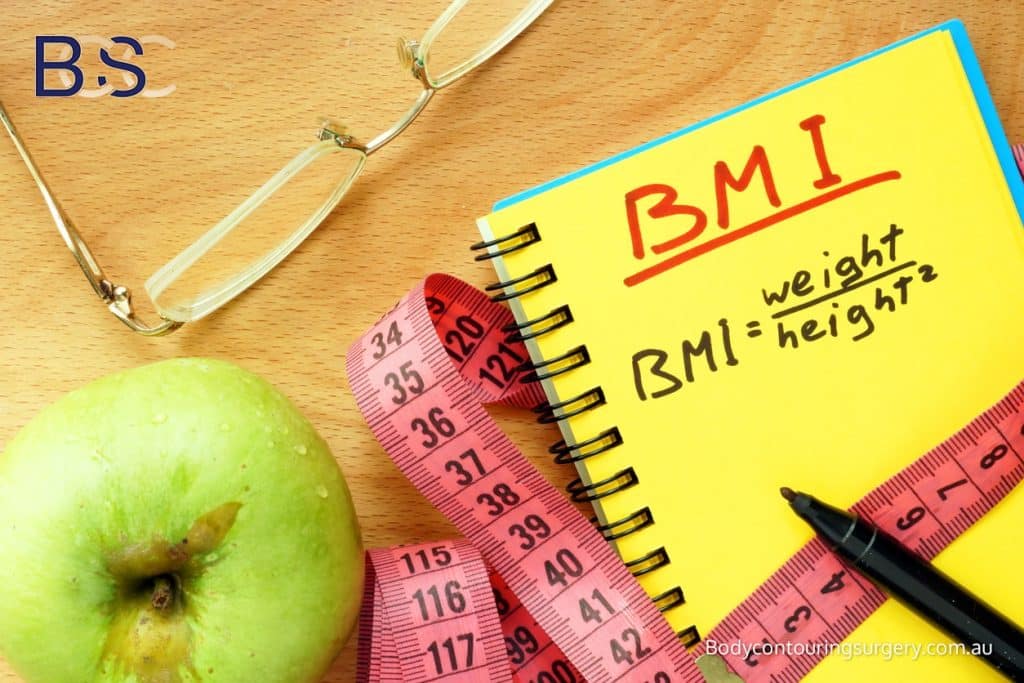
Losing a large amount of weight is a milestone achievement that can bring profound health and lifestyle benefits. For many individuals, however, the journey does not end when they lose weight. The skin, stretched for years, may not retract fully, leaving behind excess skin that causes both functional problems and discomfort. This is particularly noticeable around the lower trunk, where loose skin can remain on the abdomen, waistline, flanks, lower back, and buttocks. These folds are not only a medical concern but also a source of hygiene issues, movement restrictions, and discomfort.
Lower trunk surgery after significant weight loss, a form of body contouring surgery, may be considered as a reconstructive option. It is not intended to reduce weight but to remove excess skin. This guide explores why patients consider body contouring procedures, who may be suitable, the types of surgical procedures available, the risks, recovery period, and how Medicare and private health insurance may apply.
When skin loses elasticity and tissue quality changes, redundant skin folds may remain after major weight loss or weight loss surgery. These folds can:
These medical issues can affect day-to-day activities, lifestyle changes, and overall well-being. Body contouring surgery, including procedures like abdominoplasty, medial thigh surgery (thighplasty), and circumferential lipectomy (surgical removal of excess skin and fat), may help treat excess skin and support function.
Not every individual who has weight loss procedures or bariatric surgery will need body contouring surgery. Suitability is determined during consultation and is based on several important factors:
To qualify for Medicare Benefits Schedule (MBS) item numbers, patients must demonstrate stable weight for at least six months. Many surgeons recommend 12 months of stability, allowing stretched skin to settle naturally. Surgery performed too early can mean further surgery is required if more weight is lost.
Body mass index is a useful guide. Optimal surgical outcomes are usually achieved when BMI is in the healthy to slightly overweight range (18–30). At higher BMIs, risks of surgical complications such as poor wound healing, blood clots, and infection are increased. Importantly, surgery treats excess skin and fat on the outside, not visceral fat.
Medicare requires documentation of significant weight loss (at least five BMI units), stable weight, and functional symptoms such as rashes or difficulty with movement.
Factors such as smoking, diabetes, or certain medications affect surgical outcomes and healing. Assessment of cardiovascular and respiratory function is essential for anaesthetic safety.
Patients must understand that body contouring procedures, including abdominoplasty or circumferential excision, will remove excess skin but leave scars. Having realistic expectations about surgical outcomes, recovery period, and scar placement is vital.
Various surgical procedures can be performed to remove excess skin. These include:
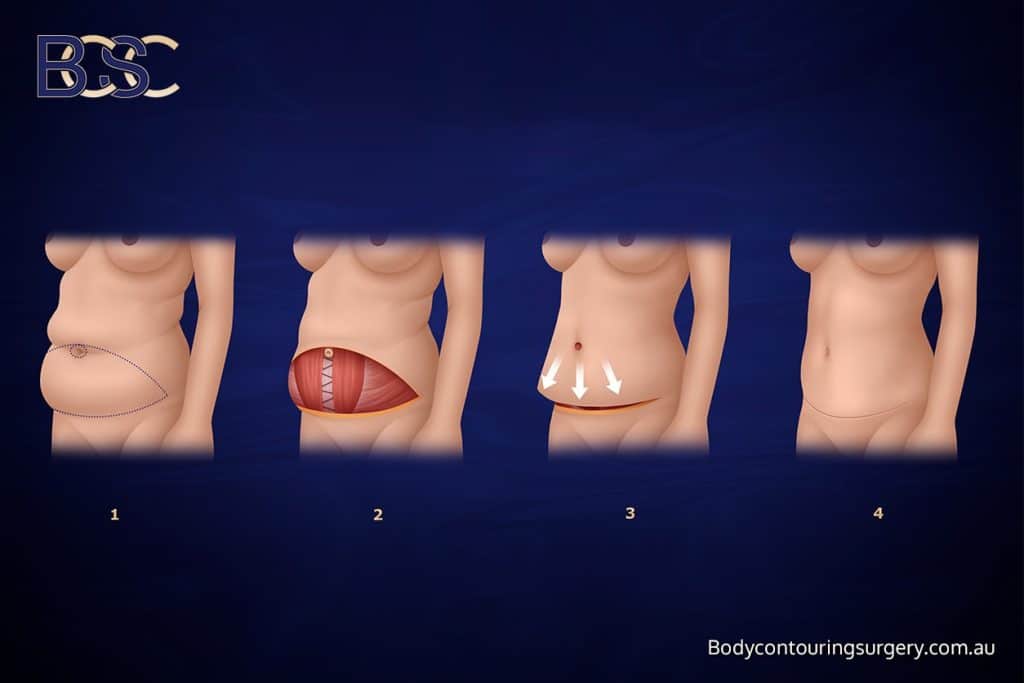
Abdominoplasty removes excess skin and fat from the lower abdomen and may repair separated abdominal muscles (diastasis recti). It is common after pregnancy, major weight loss, or gastric bypass surgery.
This surgical technique removes both vertical and horizontal redundant skin, creating an anchor-shaped scar. It is often considered for massive weight loss patients with significant loose skin.
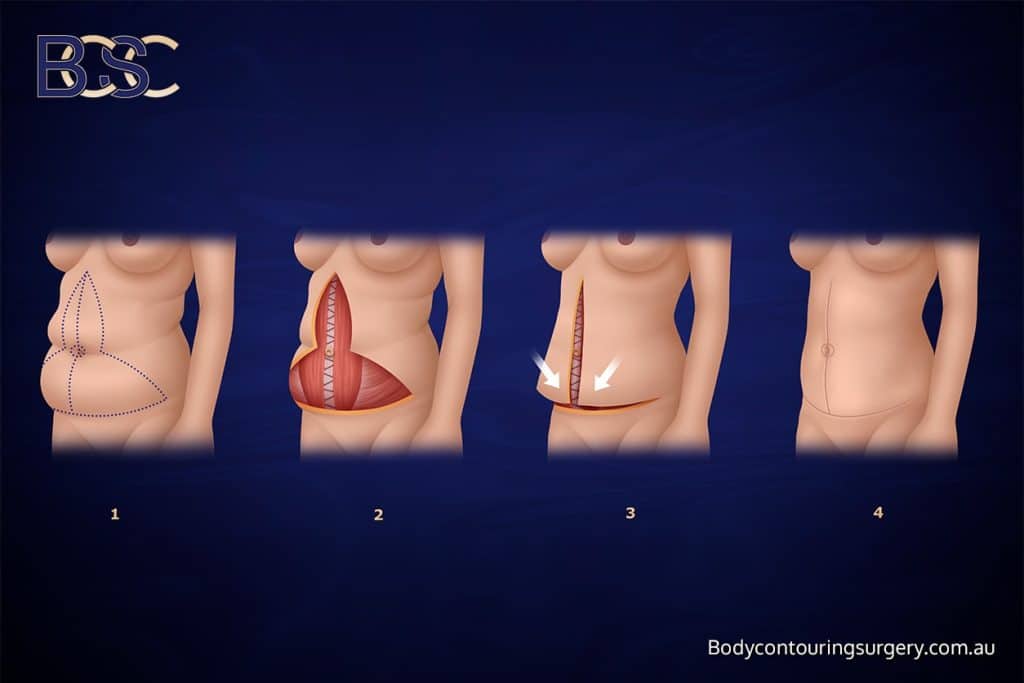
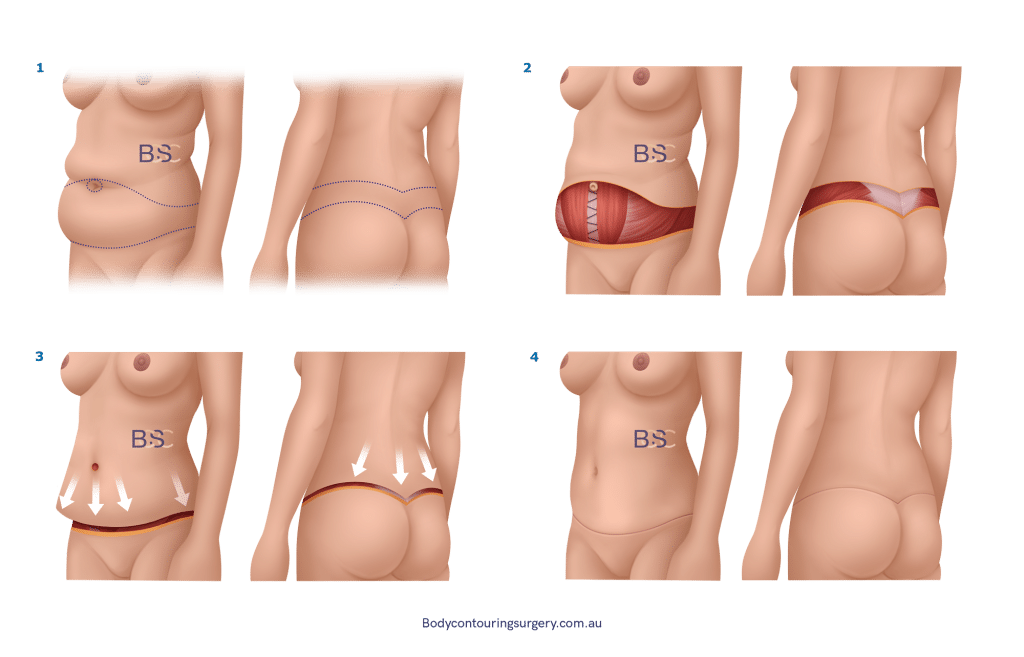
This operation removes excess skin 360 degrees around the lower trunk, including abdomen, lower back, buttocks, and outer thighs. A circumferential body lift is a type of body contouring surgery designed for patients after massive weight loss, treat mainly vertical laxity across the trunk.
Focused on removing extra skin that hangs as an apron from the lower abdomen. This body contouring surgery does not reposition the umbilicus but can relieve skin infections and discomfort in the lower abdomen.
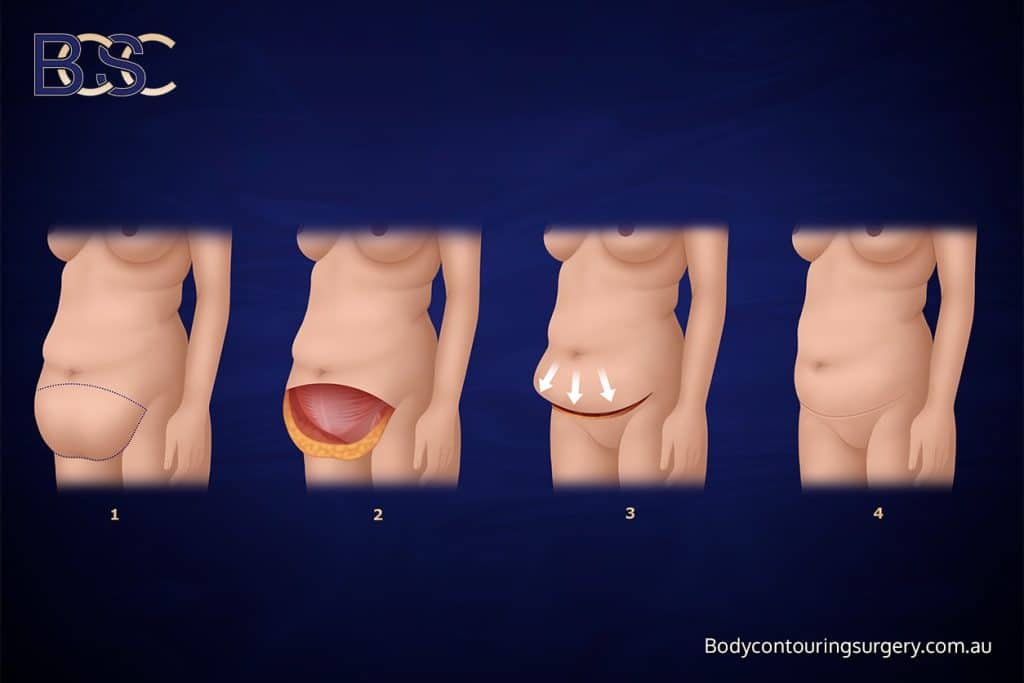
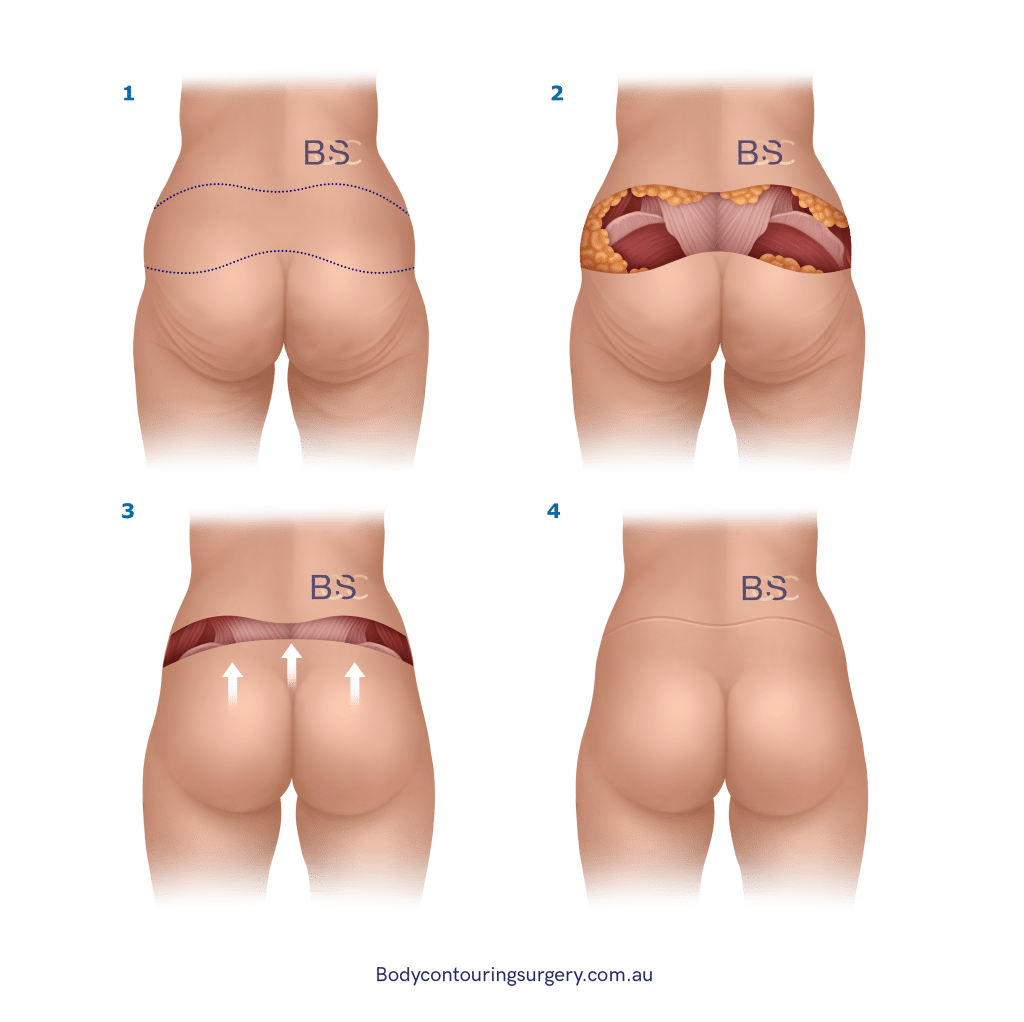
Removes excess skin and fat from the lower back, lifting the buttocks. May be staged or combined with an abdominoplasty as part of a circumferential operation.
A more extensive operation that combines fleur-de-lis abdominoplasty with a circumferential body lift to treat significant weight loss deformities.
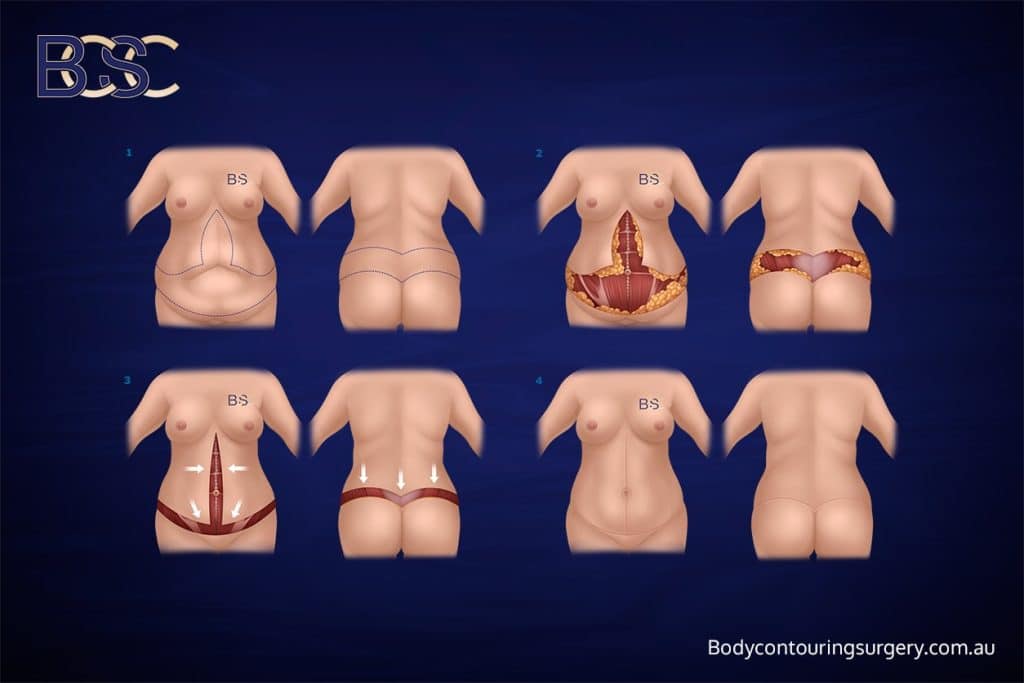
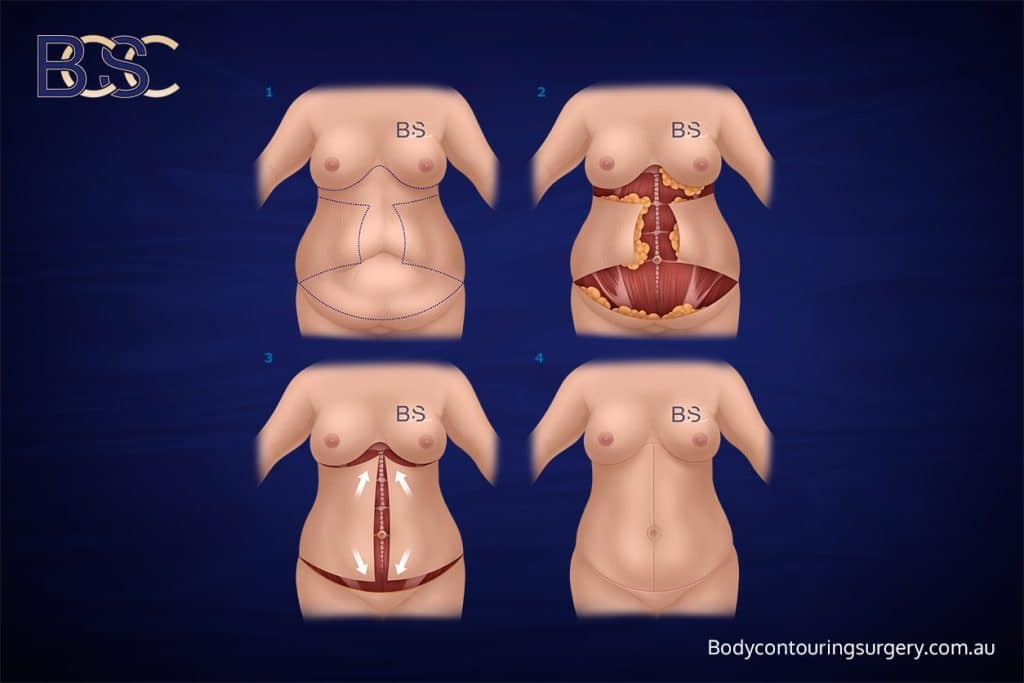
Extends the fleur-de-lis abdominoplasty to include the upper abdomen for patients with severe excess skin and fat above the umbilicus.
Removes excess skin above and below the belly button without moving it. Suitable for selected patients.
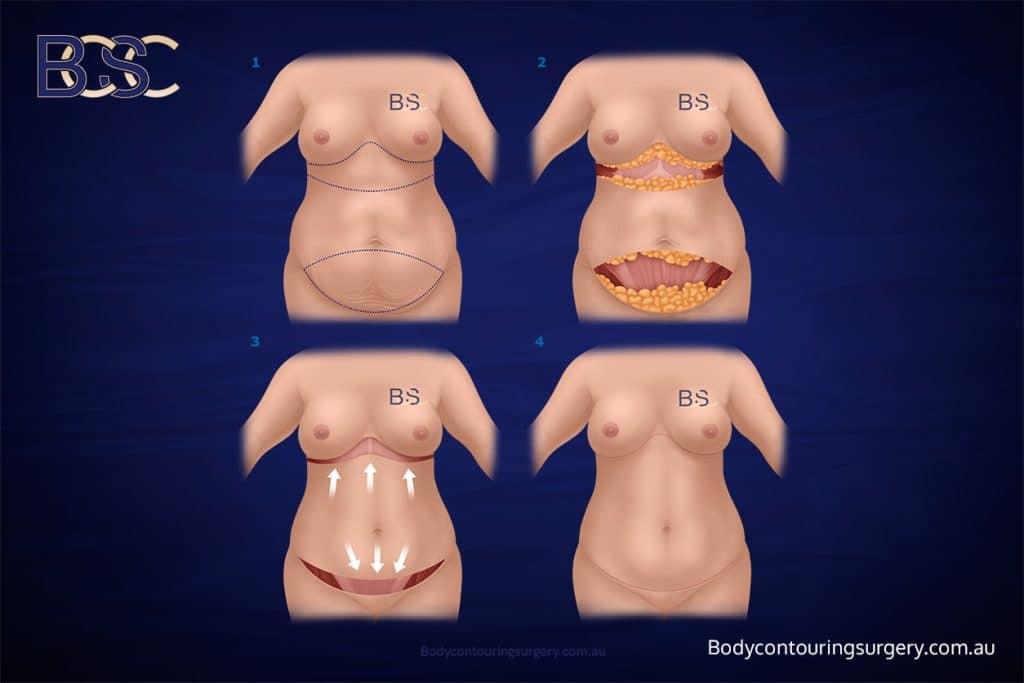
Patients often require multiple surgery procedures to address loose skin in different regions after significant weight loss. These may include:
A mastopexy, also called a breast lift, removes excess skin from the breasts and repositions the breast tissue. It may sometimes be combined with breast augmentation (augmentation mammoplasty) or breast reduction (reduction mammoplasty).
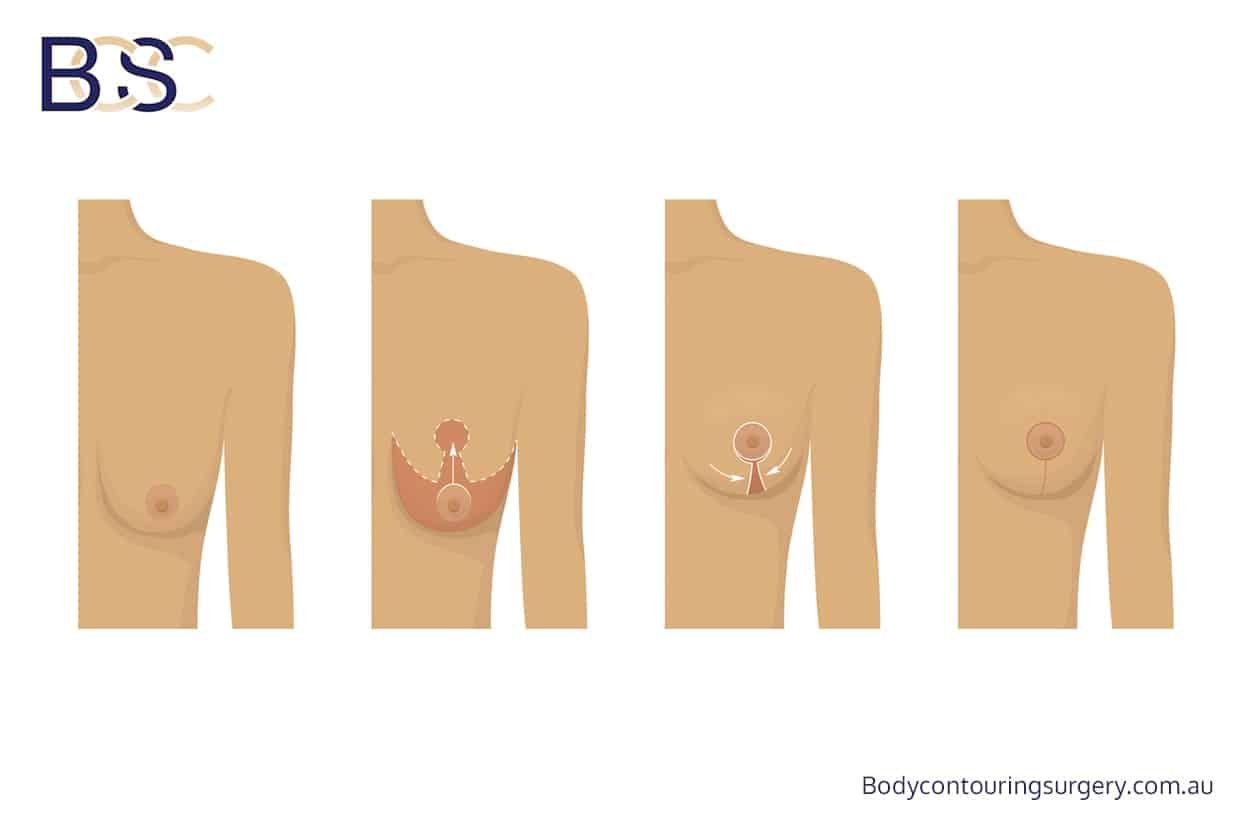
Treats the inner thighs by removing excess skin and fat. This is often paired with circumferential excision.
Brachioplasty, commonly called an arm lift, removes excess skin from the upper arms to treats laxity following weight loss.
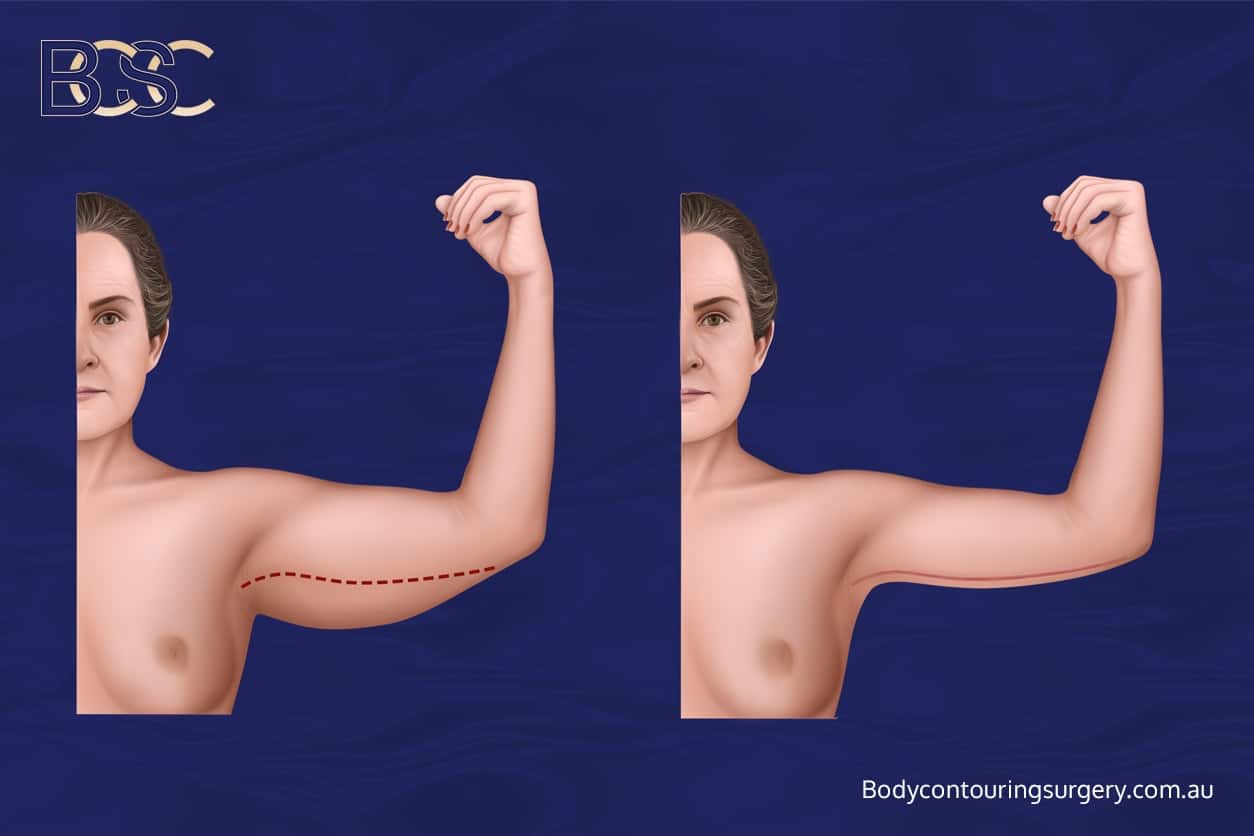
Treats loose skin across the upper body and chest.
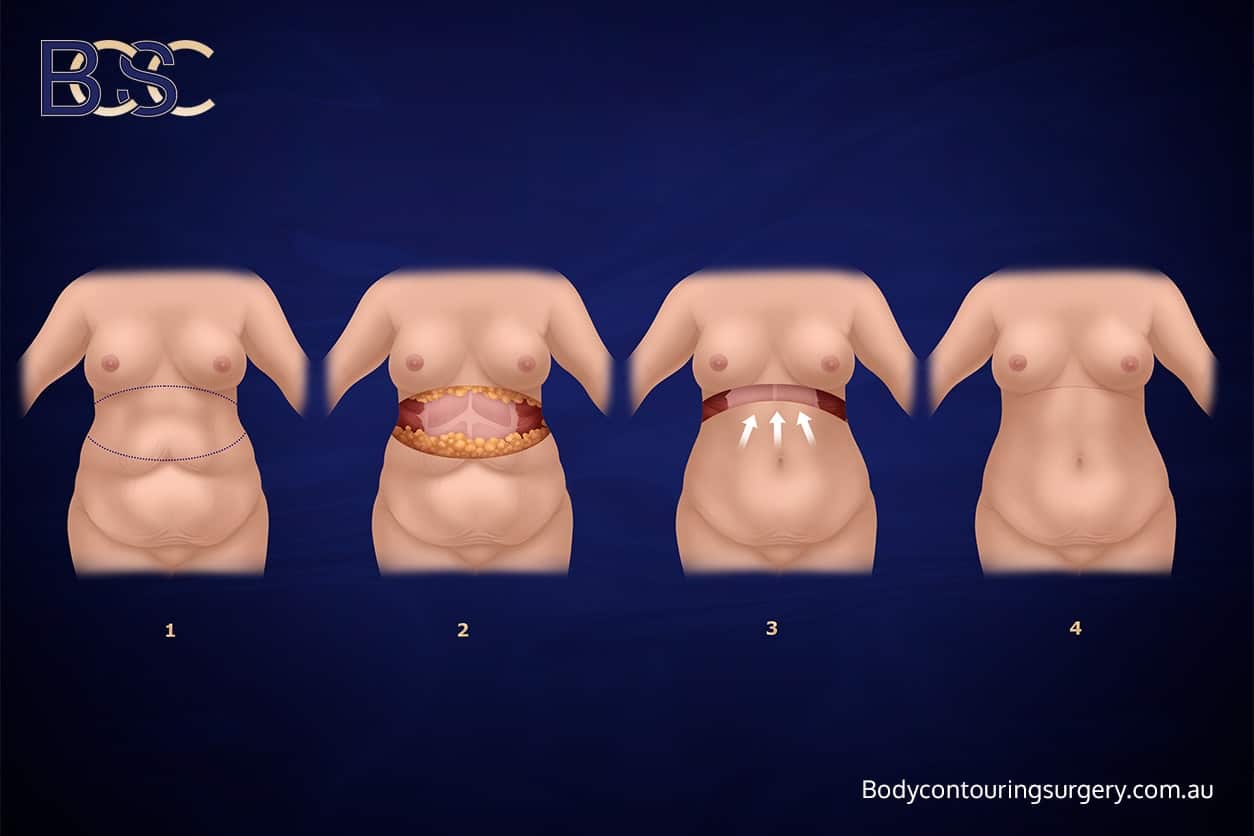
These body contouring procedures may be performed together or staged, depending on safety and recovery considerations.
All surgery and reconstructive operations carry potential risks. For body contouring procedures, risks may include:
Each patient is counselled thoroughly on risks, and surgical skills and strategies are employed to reduce them.
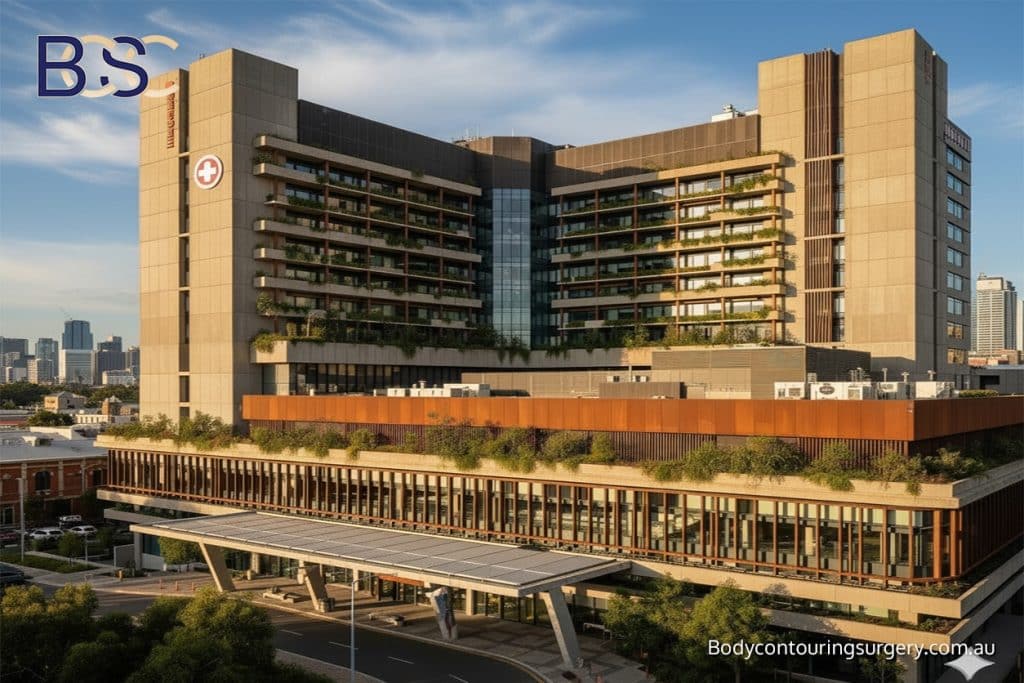
Recovery following a body contouring surgery or abdominoplasty depends on the type of body lift procedure and the individual. Key points include:

Eligibility applies when strict functional and weight loss criteria are met.
If a Medicare item applies, private health insurance may help cover hospital costs. These operations are often grouped with bariatric surgery under Gold or top-level cover.
When no MBS item number applies, the surgery is considered cosmetic. Patients must cover surgeon, anaesthetist, and hospital costs, including GST.
Written quotes detail all fees, including those for body contouring surgery and related surgical procedures designed for post-weight loss patients.
No. Some retain good tissue quality. Others, especially after bariatric surgery or gastric bypass surgery, may require skin removal to treat excess skin folds.
While there is no strict cut-off, body mass index in the 18–30 range is considered safer and associated with better surgical outcomes.
If weight remains stable, the results of body contouring surgery are long-lasting. Ageing, lifestyle changes, and weight fluctuations may alter results over time.
Eligibility requires stable weight, major weight loss (at least five BMI units), and documented medical issues such as rashes or functional limitations.
Scars are permanent but typically fade. They are positioned to be concealed where possible.
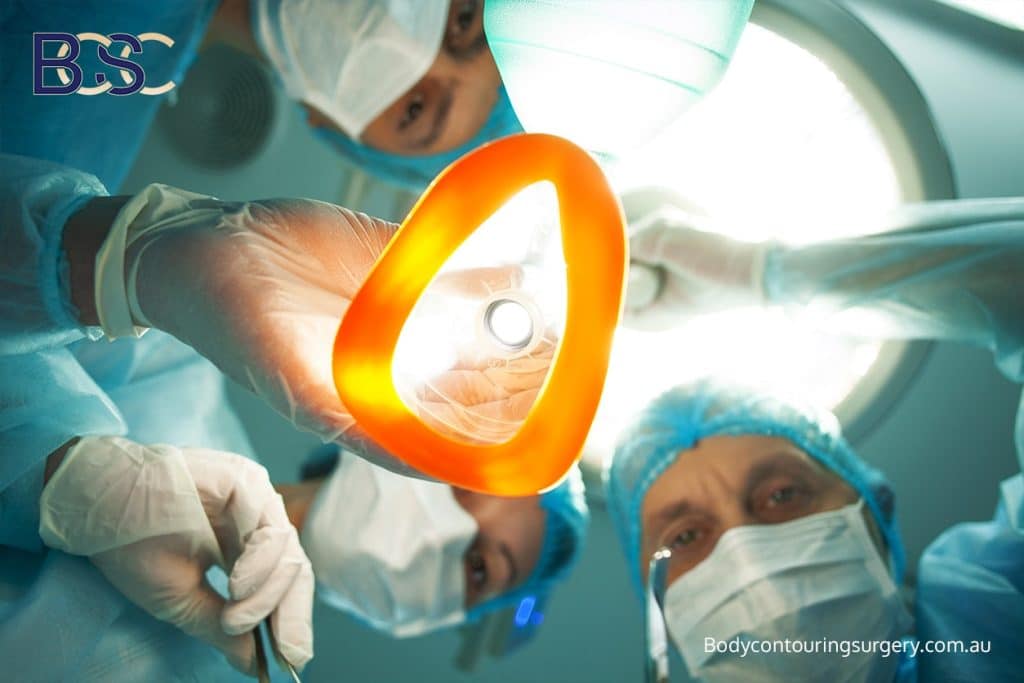
Lower trunk surgery after significant weight loss is not about trying to lose weight again. It is about excess skin removal to support function, reduce infections, and assist mobility. For many massive weight loss patients, reconstructive surgery such as a circumferential lipectomy, abdominoplasty, medial thigh surgery (thighplasty), brachioplasty, or mastopexy can assist with physical concerns related to excess skin.
At BCSC (Body Contouring Surgery Clinic), our approach to body contouring surgery focuses on education and realistic expectations. Every consultation explores candidacy, surgical technique options, potential risks, recovery period, and financial considerations. Patients are guided step by step to make informed choices on various surgical procedures to treats excess skin after a significant weight loss journey.